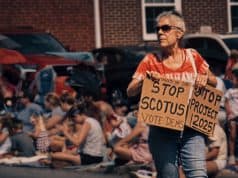
In 1787, the framers of the Constitution asked the American people to adopt a new political charter for the nation, and in the ensuing debates over the Constitution’s ratification, a common concern emerged among many: the federal government would become too powerful.
Skeptics of the new Constitution believed that a stronger national government might threaten state sovereignty and individual rights. Vocal opponents questioned whether the Constitution would restrain federal power in any way—one anonymous writer in the Maryland Gazette asked in 1788, “What limits are there to [federal] authority? I fear none at all.”
This widespread anxiety over the potential reach of federal power ultimately inspired a movement to add a bill of rights to the Constitution—a bill of rights that would help guard against expansive federal authority.
Of course, the framers of the Constitution never set out to create a government with unbounded power. Their aim was to correct the failures of the Articles of Confederation by constructing a new national government that would better preserve the people’s natural rights. They were well aware that domineering centralized governments were prone to abuse, corruption, and failure. They knew that the government they designed had to remain limited in power for liberty to last.
Yet many framers opposed adding a bill of rights to the Constitution. While this position may seem inconsistent with their aim to confine federal authority, the framers didn’t take this stance because they were indifferent about individual rights or because they wanted to trample on state sovereignty. In truth, they opposed a bill of rights for the same reason why supporters wanted one: they sought to restrain federal power.
Alexander Hamilton and James Madison argued that, given the popular foundation of American government, a bill of rights was unnecessary to preserve the people’s most cherished rights. The United States was unlike other nations in history, where the people had to plead with the ruling authority to grant them certain rights or to restrain the otherwise unlimited power of government. Hamilton explained that past bills of rights were “stipulations between kings and their subjects, abridgments of prerogative in favor of privilege, reservations of rights not surrendered to the prince.” By contrast, the people of the United States were the ruling authority, and all governing power was derived from them. So they had no need to insert specific rights into the Constitution when they delegated to the federal government no power over those rights. Madison stressed that “the rights in question are reserved by the manner in which the federal powers are granted.” Hamilton likewise said that, because the federal government was “founded upon the power of the people” and limited to the enumerated powers in the Constitution, the people “have no need of particular reservations.”
Hamilton further warned that a bill of rights would be “not only unnecessary in the proposed Constitution, but would even be dangerous.” He reasoned that the inclusion of a bill of rights might be implied as a grant to the federal government of a regulatory power over these rights. It would give “men disposed to usurp a plausible pretense for claiming that power. They might argue with a semblance of reason . . . that a power to prescribe proper regulations concerning [the Constitution] was intended to be vested in the national government.” Such arbitrary power, he believed, would only give rise to a more expansive and intrusive federal authority over time.
Despite these principled objections to a bill of rights, popular support for a bill prevailed. Although the Constitution was ratified without it, many states included a recommended bill of rights in their ratifying documents, and the people pressured the First Congress of the United States to adopt one by amendment when it convened in 1789.
James Madison (newly elected as a U.S. Representative from Virginia) took leadership of the amendment process in the First Congress so that he could steer the phrasing of the bill of rights to be consistent with the American principle of popular sovereignty. He intentionally avoided language that suggested government was the source of all rights (e.g., “the people are granted the freedom of speech”). Instead, Madison used prohibitive language to make abundantly clear that these rights naturally belonged to the people and that the federal government could not interfere with them in any way (e.g., the First Amendment says, “Congress shall make no law . . . abridging the freedom of speech”).
Madison also authored two special amendments to make certain that the enumeration of specific rights, in his words, would never “be so construed as to diminish the just importance of other rights retained by the people, or as to enlarge the powers delegated by the Constitution” to the federal government. The Ninth Amendment specifically reinforces the principle that the people, as the source of all governmental power, hold many more rights than those stated in the Constitution. It reads, “The enumeration in the Constitution, of certain rights, shall not be construed to deny or disparage others retained by the people.” And the Tenth Amendment places a clear boundary on federal power. It states, “The powers not delegated to the United States by the Constitution, nor prohibited by it to the states, are reserved to the states respectively, or to the people.”
Our Bill of Rights was meant to preserve a number of key rights long valued by the American people, but what it stands for, above all, is the great care taken by the founding generation to ensure that federal power would always remain limited. The reason for the Bill, and the reason against it, was to prevent the rise of a powerful national government in America.
So as we debate the proper scope of federal authority today, we must not lose sight of this original design: our Constitution and our Bill of Rights established a government of limited power.








